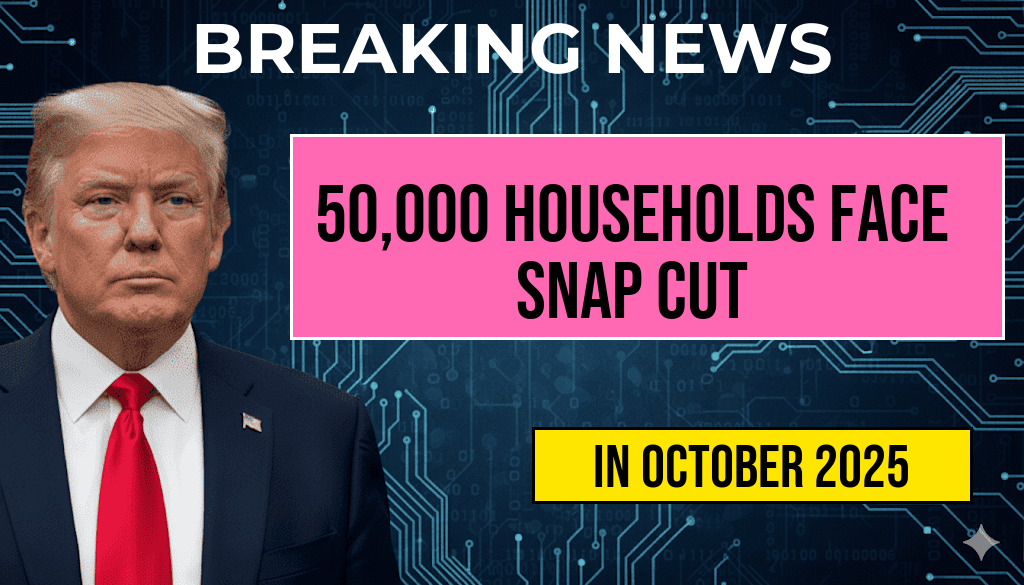Starting this November, approximately 50,000 households across several states will experience a significant reduction in their Supplemental Nutrition Assistance Program (SNAP) benefits, with an average decrease of about $58 per month. This adjustment stems from federal policy changes tied to the expiration of pandemic-era emergency measures, which temporarily boosted benefit levels for millions of recipients. The upcoming reduction marks a pivotal shift in SNAP’s landscape, potentially impacting food security for vulnerable families already facing economic challenges. Officials warn that the decrease could force some households to make difficult choices between essentials like rent, utilities, and nutrition. As policymakers and advocacy groups scrutinize the long-term implications, affected individuals are preparing for the financial adjustments while community organizations mobilize to provide support during this transitional period.
Understanding the Context Behind the SNAP Benefit Reduction
The End of Temporary Pandemic Measures
The federal government introduced emergency increases to SNAP benefits in March 2020 to help Americans weather the economic fallout caused by COVID-19. These measures temporarily raised monthly benefits by an average of 15%, providing additional support during unprecedented times. As pandemic-related restrictions ease and economic conditions improve, authorities have begun phasing out the supplemental payments, leading to scheduled reductions that are set to take effect in November 2023.
How the Reduction Is Calculated
The decrease hinges on the federal government’s decision to revert to pre-pandemic benefit levels, accounting for household size, income, and allowable deductions. The Supplemental Nutrition Assistance Program operates on a formula designed to ensure equitable distribution based on need, but the temporary boosts inflated benefits beyond typical levels. Consequently, households that previously received higher benefits are now facing a recalibration, which, in some cases, equates to a $58 monthly cut.
Impact on Households and Food Security
Who Will Be Affected?
- Approximately 50,000 households across states including California, Texas, Florida, and New York.
- Recipients with lower incomes and larger families will likely experience the most significant reductions.
- Individuals relying solely on SNAP benefits for nutritional needs are at increased risk of food insecurity.
Potential Consequences
| Impact Area | Description |
|---|---|
| Food Security | Increased risk of hunger and reliance on food banks or community aid programs. |
| Household Budgeting | Greater strain on household finances, potentially leading to difficult trade-offs. |
| Health Outcomes | Possible deterioration in nutrition quality due to reduced food purchasing power. |
Responses from Policymakers and Advocacy Groups
Government Stance
The U.S. Department of Agriculture (USDA), which oversees SNAP, emphasizes that the benefit reductions align with the program’s regular structure, now that pandemic-related adjustments are ending. They maintain that the adjustments are necessary to restore the program’s fiscal sustainability and reflect current economic conditions.
Criticism and Concerns
Advocates warn that the reduction could disproportionately affect low-income families, especially in regions where food prices are rising faster than income. Groups such as Feeding America have called for targeted relief measures and increased funding for local food assistance programs to mitigate the impact.
- Food insecurity statistics in the U.S.
- USDA SNAP benefits overview
- Forbes coverage on food insecurity trends
Looking Ahead: Navigating the Transition
Support Strategies for Affected Households
- Local food banks and community organizations are expanding outreach efforts.
- States are exploring targeted assistance programs to provide supplementary aid.
- Recipients are encouraged to review their budgets and seek nutrition counseling services available through SNAP.
Policy Discussions and Future Outlook
Legislators are divided on the issue, with some advocating for temporary extensions or adjustments to mitigate hardship, while others emphasize fiscal responsibility. The upcoming legislative sessions are expected to focus on balancing economic sustainability with social safety nets, especially as inflation and rising living costs continue to challenge low-income families.
As the November reductions take effect, the broader conversation around food assistance programs and economic support initiatives is likely to intensify, highlighting ongoing debates about the best ways to ensure nutrition and stability for the most vulnerable populations.
Frequently Asked Questions
What is the reason for the SNAP reduction in November?
The SNAP (Supplemental Nutrition Assistance Program) benefits are being reduced due to federal policy changes that aim to adjust benefit levels based on economic conditions and federal funding guidelines.
How many households will be affected by the SNAP reduction?
Approximately 50,000 households across the region will experience a $58 monthly reduction in their SNAP benefits starting this November.
Why are the SNAP benefits being reduced specifically in November?
The benefit reduction is scheduled to begin in November as part of a state-wide adjustment aligned with changes in federal funding and economic policies.
Will there be any assistance programs to help households affected by the SNAP reduction?
Yes, local agencies and community organizations are offering assistance programs, including food banks and financial counseling, to support households impacted by the benefit reduction.
How can households prepare for the upcoming SNAP benefit decrease?
Households are advised to plan their budgets carefully, explore additional assistance options, and consult with local social services to understand available resources and support during this transition.






